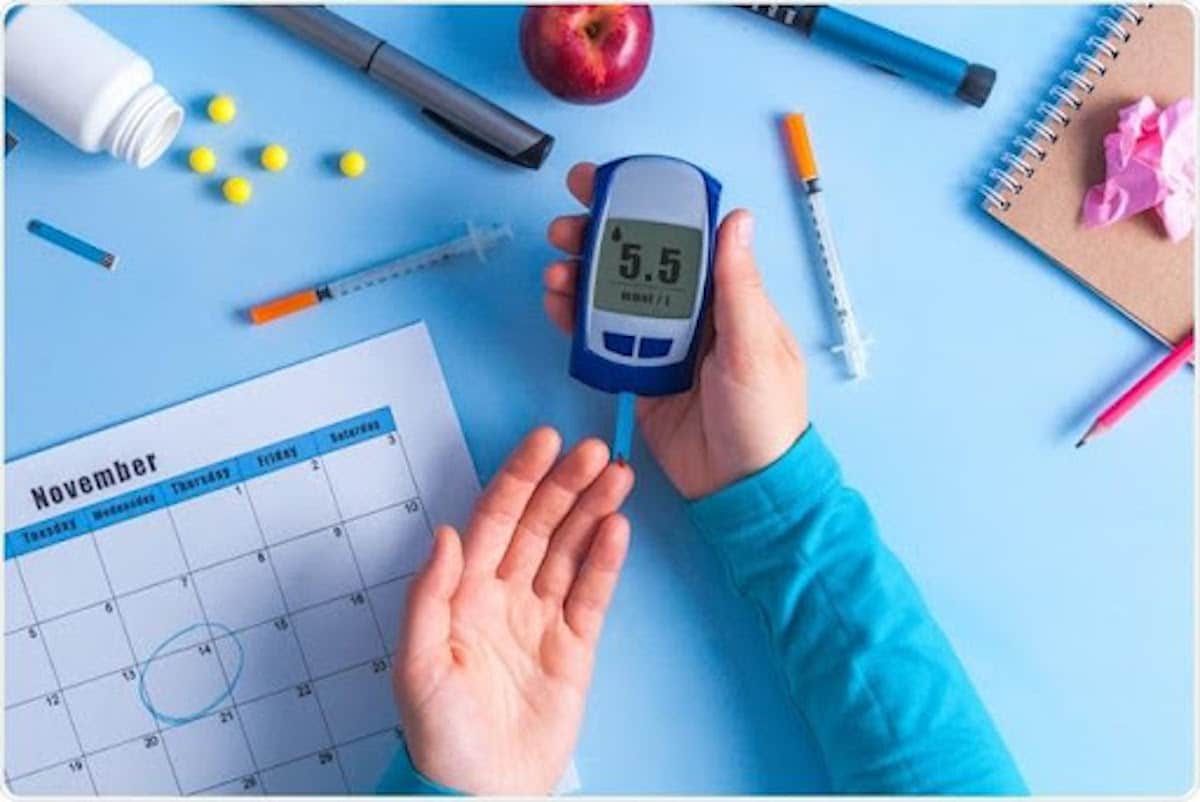Table of Contents
Diabetes is a metabolic health issue that affects your body’s capacity to control blood sugar (or glucose) levels. Your body’s capacity to manufacture insulin is impaired by Type 1 diabetes. The pancreas secretes the hormone insulin, which also helps in the body’s utilization of blood sugar by transporting it from the blood into the cells for later use. As a result, it keeps your body’s blood sugar from becoming too high. However, in the case of diabetes type 2, your body is unable to produce enough insulin to ensure blood sugar levels from becoming out of control.
How High Is Too High?
Any blood glucose level (BGL) that is higher than the recommended range is too high. Your upper limit may be different for various people, so ask your healthcare practitioner what it is.
But generally speaking:
- A 140 mg/dL of blood sugar is regarded as hyperglycemic but not dangerously high.
- A 180 mg/dL reading is too high, and you should take action to lower it.
- 240 mg/dL further puts you at risk for diabetic ketoacidosis (DKA, also known as a diabetic coma), which can be fatal, especially if you have type 1 diabetes.
- The potentially catastrophic hyperglycaemic hyperosmolar syndrome (HHS), especially in type 2 diabetes, can be brought on by blood sugar levels of 600 mg/dL or greater over protracted durations.
Complications of high blood sugar
Any issues can be avoided by regularly checking your blood sugar and treating hyperglycemia as soon as it manifests.
When someone has high blood sugar on a regular basis and receives no treatment, health issues may develop.
Among the effects are:
- Increased risks for kidney issues
- Diabetes retinopathy, or damage to the blood vessels in the eyes that impairs vision
- Diabetic neuropathy, or nerve damage that may alter feelings in the feet and hands.
- Enhanced risks for cardiac issues
The probability of these issues developing can be reduced by taking measures to maintain your blood sugar at target values.
Four ways to quickly reduce your sugar levels:
Take insulin
Humalog, Novolog, or Apidra are examples of rapid-acting insulin, which is the preferred and quickest way to treat hyperglycemia. You might be able to receive a correction dose via your insulin pump if you have type 1 diabetes.
NPH is a type of slow-acting insulin that takes longer to reduce blood sugar levels. It takes a long time to work. Therefore, if you need to lower your BGL immediately, it is not the right course of treatment.
Intramuscular Injections
Your body can absorb insulin more quickly if you inject it into a muscle. However, hypoglycemia, which could become severe, is also more likely to result. It can also result in an insulin overdose, which could be lethal.
If you have hyperglycemic episodes, you should discuss with your medical team whether intramuscular injections are a good choice. They can also instruct you on where and how to administer this type of injection to yourself.
Take Missed Medication
Many diabetics take pharmaceutical drugs in addition to or instead of insulin. These drugs aid in maintaining normal blood sugar levels.
Your BGL may increase if you forget to take a dose of these drugs. Make sure you took your last dose if a high reading surprises you. This is made simple by keeping them in a daily pill sorter as opposed to a bottle.
However, several diabetes medications only function when taken prior to eating. They will be unable to bring down a BGL that is too high. These include alpha-glucosidase inhibitors like Precose (acarbose) and Glyset (miglitol) and biguanides like Glucophage (metformin).
Timing of a Makeup Dose
Take your diabetes medicine as soon as you remember if you miss a dose. You risk taking two doses at once by taking your missed prescription too soon after your next planned dose. There may be adverse effects that are harmful.
When you are in doubt, consult the instructions on the medication container, get in touch with your doctor, or consult a pharmacist. If you repeatedly skip doses, speak with your personal doctor to understand the best course of action.
When to see a doctor?
The University of Michigan describes 300 mg/dL of blood sugar levels as hazardous. Therefore, you should visit your doctor if you have two consecutive blood sugar readings of 300 or above.
Call your doctor for reassurance and practical guidance if you are concerned about the high blood sugar warning signs. If you have chronically high blood sugar and any of the given below symptoms, consult a doctor:
Continuously elevated blood sugar levels, often urinating, heightened thirst, and high urine sugar levels. Consult your doctor about the best blood sugar level to reach as well as how frequently you should check your blood sugar.
Conclusion
As long as it is treated, a single incident of elevated blood sugar is typically not life-threatening for diabetics. An extra dose of insulin will typically soon return your blood sugar levels to normal. However, you should consult and get medical assistance immediately if you are taking insulin and running out or getting DKA or HHS symptoms.


